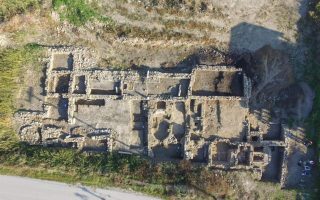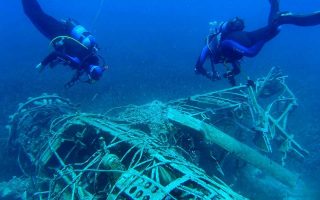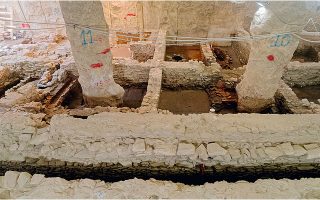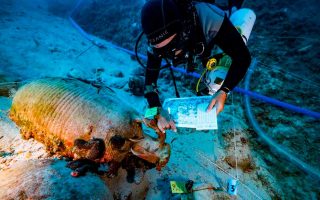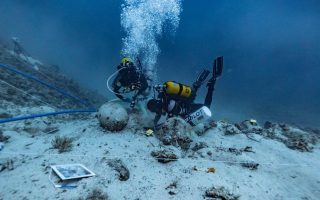Amphipolis tomb to open to the public under pilot plan
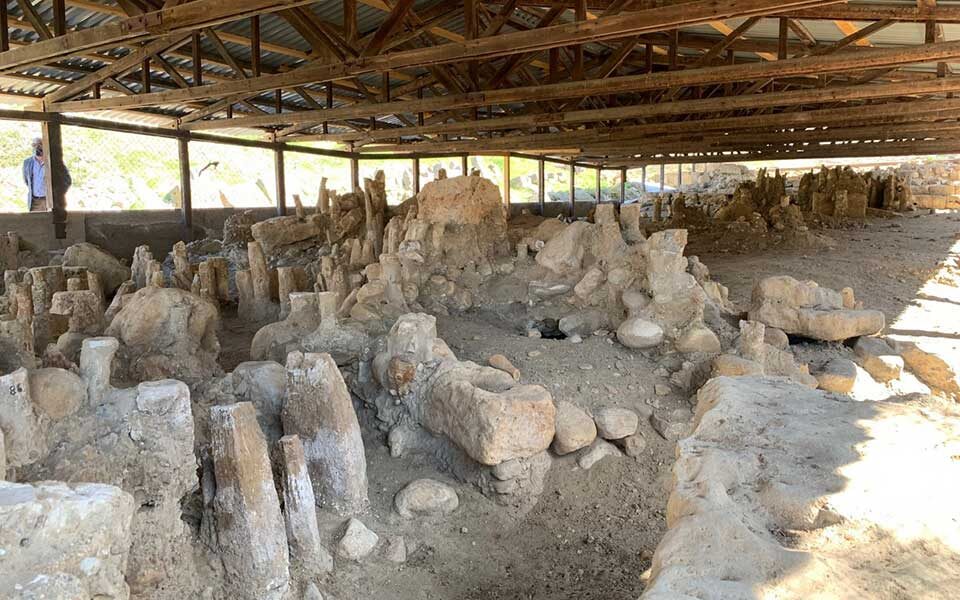
The Greek Ministry of Culture has carried out an assessment of the conservation and enhancement works at Amphipolis in central Macedonia.
The famous archaeological site, which generated global media attention in 2014 following the discovery of the late 4th century BC Kasta Tomb, is currently undergoing a massive restoration project, with financial support from the EU’s Recovery and Resilience Fund.
The Ministry announced plans in 2017 to open the monumental tomb to the general public once restoration works have been completed. Following the latest assessment, Culture Minister Lina Mendoni said: “The works at the Kasta Tomb are proceeding according to schedule. Within 2022, a pilot plan will be launched, allowing specific groups of the public to access the burial monument, in order to examine the specifics of the site and find the best solutions for its operation.”
The famous burial monument, the largest ever found in Greece, dates to the time of Alexander the Great. Due to its enormous size – 158 meters in diameter – scholars have speculated that it belonged to a wealthy Macedonian noble, a member of the royal family, or as a monument to Hephaestion, second-in-command (“Chiliarch”) of Alexander’s empire and his closest friend and confidant.
Mendoni added that work on the tomb, supported by the Central Macedonia Region funding program, would be completed in 2023, and a new phase will continue through 2027.
Elsewhere at the site, it was announced that the remains of the ancient wooden bridge that once crossed the Strymon River will undergo further conservation works, including the replacement of its shelter, first erected in the late 1970s.
The ancient bridge, discovered in 1977, is an exceptionally rare example of a surviving wooden structure from antiquity. Consisting of petrified timber posts and a number of horizontal beams, it has been carbon dated to the first half of the 6th century BC. It was mentioned in Thucydides’ account of the Peloponnesian War, where it played an important role in the Battle of Amphipolis in 422 BC between the Spartans and the Athenians.
Conservation work on the bridge, with support from the Recovery and Resilience Fund, will enhance its protection and improve visitor experience.
“Amphipolis is a major archeological site with a vast history. A very important area with significant monuments. Our priority is the protection, restoration, promotion and utilization of the monuments and the archeological site, which apart from their unique cultural importance also constitute development resources for the local community and for the national economy,” said Mendoni, adding that the Ministry’s priority was to eventually open the site to the general public.
The Ministry of Culture and Sports has also initiated the procedure to have the Kasta Tomb, which contained five burials, included in UNESCO’s list of World Heritage Sites.
Last year, Greece’s Central Archaeological Council (KAS) approved plans for the creation of walking routes, rest areas and signage for the site, as well as the necessary infrastructure to make the area accessible to visitors with disabilities.
This article first appeared in Greece-Is.com, an English-language publishing initiative by Kathimerini.

